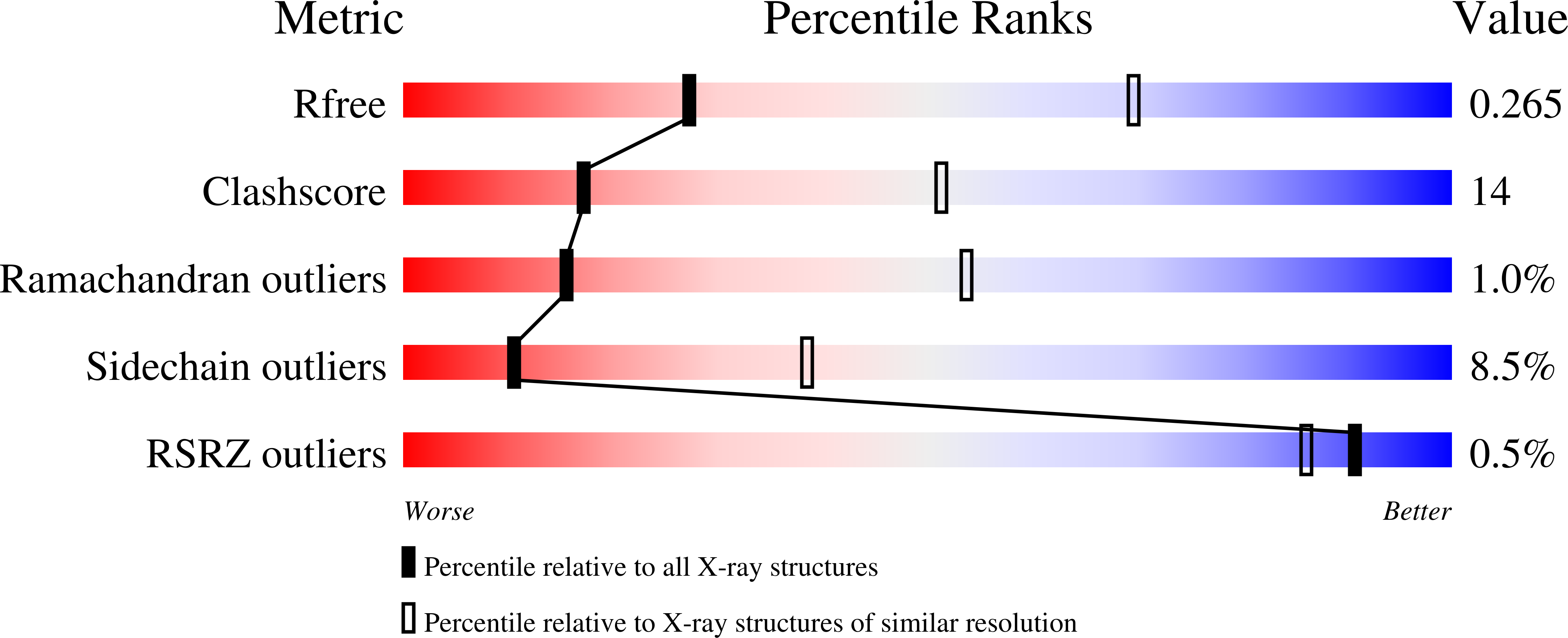Structural basis for Ca2+ selectivity of a voltage-gated calcium channel.
Tang, L., Gamal El-Din, T.M., Payandeh, J., Martinez, G.Q., Heard, T.M., Scheuer, T., Zheng, N., Catterall, W.A.(2014) Nature 505: 56-61
- PubMed: 24270805
- DOI: https://doi.org/10.1038/nature12775
- Primary Citation of Related Structures:
4MS2, 4MTF, 4MTG, 4MTO, 4MVM, 4MVO, 4MVQ, 4MVR, 4MVS, 4MVU, 4MVZ, 4MW3, 4MW8 - PubMed Abstract:
Voltage-gated calcium (CaV) channels catalyse rapid, highly selective influx of Ca(2+) into cells despite a 70-fold higher extracellular concentration of Na(+). How CaV channels solve this fundamental biophysical problem remains unclear. Here we report physiological and crystallographic analyses of a calcium selectivity filter constructed in the homotetrameric bacterial NaV channel NaVAb. Our results reveal interactions of hydrated Ca(2+) with two high-affinity Ca(2+)-binding sites followed by a third lower-affinity site that would coordinate Ca(2+) as it moves inward. At the selectivity filter entry, Site 1 is formed by four carboxyl side chains, which have a critical role in determining Ca(2+) selectivity. Four carboxyls plus four backbone carbonyls form Site 2, which is targeted by the blocking cations Cd(2+) and Mn(2+), with single occupancy. The lower-affinity Site 3 is formed by four backbone carbonyls alone, which mediate exit into the central cavity. This pore architecture suggests a conduction pathway involving transitions between two main states with one or two hydrated Ca(2+) ions bound in the selectivity filter and supports a 'knock-off' mechanism of ion permeation through a stepwise-binding process. The multi-ion selectivity filter of our CaVAb model establishes a structural framework for understanding the mechanisms of ion selectivity and conductance by vertebrate CaV channels.
Organizational Affiliation:
1] Department of Pharmacology, University of Washington, Seattle, Washington 98195, USA [2] Howard Hughes Medical Institute, University of Washington, Seattle, Washington 98195, USA [3].


















